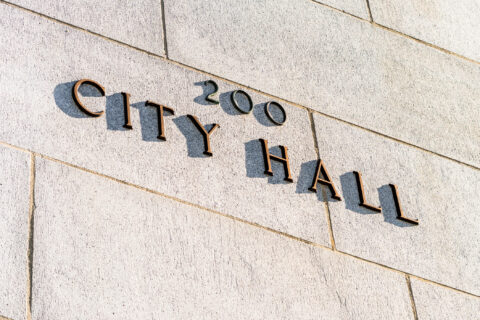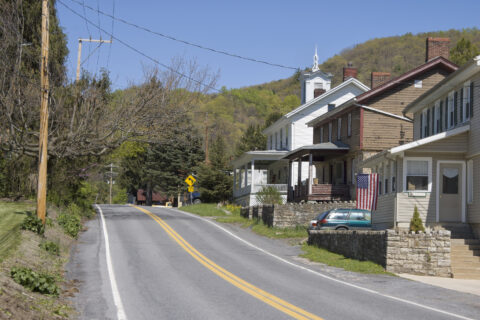In 2023, the U.S. Department of Agriculture found that one in every five children was unsure where they would get their next meal. Each year, as youth across the country return to the classroom, many are also returning to more regular meals, including breakfast and lunch. But this year, this school year is a little different, with many communities having expended all of their ARPA funds, including dollars that supported food access (including paying off school meal debt). Those same communities are also facing the cancellation of both the FY25 cycle of USDA’s Patrick Leahy Farm to School Grant Program and the cancellation of the Local Food for Schools and Child Care (LFSCC) funding. This leaves communities across the country to find new ways to ensure students are receiving nutritious meals.
NLC spoke with City Director Kathy Webb from Little Rock, AR, to learn more about the efforts the city and partners are taking to address youth hunger within their community and what they’re doing to help youth during the upcoming school year.
The city, along with partners including the Central Arkansas Library System (CALS), the Arkansas Hunger Relief Alliance and others, has supported a campaign called Be Mighty, with the goal of providing healthy food and lifestyle choices for kids within Little Rock.

National League of Cities: What are some of the successes the city and Be Mighty have had in addressing hunger amongst your youth?
City Director Kathy Webb: Be Mighty has been a success story since NLC helped launch it over eight years ago, and it continues to provide afterschool and summer meals to our youth at libraries across our community. From January to June of this year, our afterschool meal programming served over 26,000 meals to youth in our community through a partnership with a local childcare facility, Bridge 2 Success. And in 2024, we served 63,000 hot and fresh meals to youth after school and during the summer months.
We also recognized that we could do more to create a holistic approach to address hunger, particularly for caregivers who couldn’t access meals at our programs because of restrictions. To address this, we have created a network of 11 Little Free Pantries and, as of September, five fresh fridges. Potluck Food Rescue is stocking our refrigerators with support from community volunteers, and we’ve had farmers and growers contact us to provide wholesale pricing for protein and produce to stock, too.
Through these efforts, over 60,000 pounds of food have been accessed by our community, which is more than twice the amount we were able to donate in our inaugural year. Community members are able to leverage our fresh fridges, coupled with little free pantries, to create full, nutritionally balanced meals with a combination of fresh and canned items. We believe that these programs and services have allowed us to reach community members who often feel disenfranchised or who fear the stigma that accompanies more traditional food pantry settings.
NLC: How does the City of Little Rock support Be Mighty?
Director Webb: The city provides $100,000 in funding per year for Be Mighty.
NLC: Given the recent federal funding changes to anti-hunger programs, what steps are the City and partners taking to continue to support youth?
Director Webb: The City supports youth through Community Programs, spending $5,000,000 a year on prevention, intervention and treatment programs. Our Summer Youth Employment programs serve around 200 youth, who get not only paid work, but opportunities to learn about financial literacy and civic education. The city Food Commission has recently brought the issue of school meal debt to light, helping raise $40,000 to help alleviate that debt for students and their families. The Commission weighed in on SNAP cuts, urging our elected officials to take action to mitigate them, and is requesting a meeting with Sen. Boozman when he is home.
NLC: Do you have any advice for your peers across the country who are thinking about addressing youth hunger?
Director Webb: If it’s important, show that by committing money from the city budget to it. The $100,000 is one way we do that; the Food Commission is another. Taking policy positions is a third. Connecting with relevant non-profits and making sure residents have access to SNAP and WIC sign-ups at city events is important. It’s critical for our future that youth have an opportunity to thrive. Food insecurity hampers that.
NLC: Given your commitment to taking on the issue of hunger, what’s next for the city?
Director Webb: The city will launch a Mobile Market in the next couple of months, with the Market making stops in areas of food deserts across the city. It will give residents who face barriers in transportation an opportunity to shop for fresh food and popular staples in their neighborhood. The Food Commission will continue to look for ways the city can be proactive, by talking to youth and residents who face food insecurity and finding out what they need and want. That might include recommending specific stops to the Mobile Market folks, raising awareness about food access issues or partnering with Community Schools to help start gardens or pantries.
Explore More Afterschool and Summer Learning Resources
NLC has more than 20 years of experience and knowledge working with cities and municipal leaders to help strengthen local efforts to create, expand, and improve afterschool and summer learning opportunities. Visit the resource hub to find more resources that will help you grow the afterschool and summer learning programs in your community.










